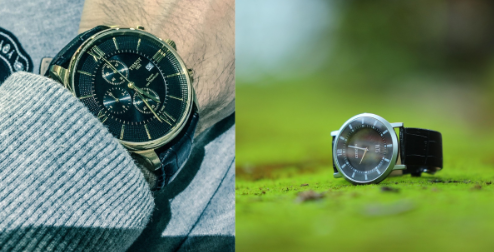Vintage watches have long captivated enthusiasts with their classic charm, intricate craftsmanship, and timeless appeal. Owning a well-crafted timepiece connects you to a rich history of design and precision. In the modern era, brands like Tissot and Citizen continue this tradition, offering exceptional watches that blend heritage with innovation. If you are exploring options between these two brands, understanding the subtle differences can help you find the perfect match for your lifestyle. In this detailed guide, we will explore tissot vs citizen and everything you need to know to care for your watch investment properly.
The Timeless Appeal of Vintage Watches
Vintage watches are more than just timekeeping devices; they are living pieces of art and history. Each watch carries a story, a connection to a bygone era where craftsmanship was revered. Whether you inherit a family heirloom or purchase a vintage piece, wearing one instantly elevates your style and appreciation for horological artistry. Brands like Tissot and Citizen, though modern, honor this legacy by offering timepieces that reflect the quality and elegance of classic watches.
Why Proper Winding Is Essential for Vintage Watches
Maintaining the beauty and functionality of a vintage watch requires more than occasional wear. One of the most important aspects of caring for a mechanical timepiece is regular winding. Without it, the internal lubricants can settle or dry up, leading to friction and potential damage to delicate components.
Whether you choose a Tissot or a Citizen automatic model, proper winding ensures that the mainspring remains engaged and the watch continues to function accurately. Regular motion keeps the gears and mechanisms inside moving smoothly, protecting the integrity of your valuable watch.
How to Wind Your Watch Safely: A Step-by-Step Guide
Winding your mechanical or automatic watch may seem simple, but doing it the right way ensures longevity and prevents damage. Here’s a safe method:
- Remove the Watch from Your Wrist: Always take the watch off to reduce strain on the crown and stem.
- Locate the Crown: Gently pull the crown out to its winding position if necessary.
- Wind the Watch Clockwise: Turn the crown slowly and consistently. You’ll feel slight resistance as the mainspring tightens.
- Stop When You Feel Resistance: Never over-wind. Once you feel a subtle stop, the mainspring is fully wound.
- Set the Time Carefully: If needed, pull the crown further to set the correct time.
Following these steps ensures that your watch remains in peak condition without unnecessary stress on its internal parts.
Common Mistakes Beginners Make When Winding
Even seasoned collectors sometimes make avoidable mistakes when winding their watches. Here are the most common errors to avoid:
- Over-winding: Continuing to wind after feeling resistance can cause the mainspring to snap.
- Winding on the Wrist: This can create awkward pressure on the crown stem, risking internal misalignment.
- Ignoring Regular Winding: Especially for manual watches, allowing the watch to stop for long periods can damage internal lubrication.
- Forcing a Tight Crown: If the crown feels stuck or overly tight, it’s better to consult a professional rather than risk breaking it.
Understanding these pitfalls will help you enjoy a seamless ownership experience, whether you opt for a Tissot or a Citizen timepiece.
The Role of Watch Winders in Preserving Vintage Timepieces
While manual winding works for daily wearers, collectors or those with multiple watches often rely on a watch winder to maintain their watches. A watch winder keeps automatic watches moving when not worn, preventing the lubricants inside from settling and ensuring accurate timekeeping.
Choosing the best watch winder ensures that your precious timepieces receive gentle, consistent motion that mimics natural wrist movements. For both Tissot and Citizen automatic watches, using a reliable winder can greatly extend their lifespan and reduce the need for frequent servicing.
If you are still weighing your decision between tissot vs citizen, knowing that both brands benefit from proper winding and maintenance might make it easier to choose depending on your habits and collection size.
Recommendations and Tips for Long-Term Care
Proper maintenance is key to preserving the beauty and function of your Tissot or Citizen watch. Here are some practical care tips:
- Service Regularly: Both brands recommend servicing every 3 to 5 years, even if the watch seems fine.
- Store Correctly: Keep your watch in a temperature-controlled, dry place when not in use.
- Invest in a Watch Winder: Especially for automatic watches, a quality winder can protect your investment.
- Avoid Exposure: Minimize exposure to strong magnetic fields, water (if not water-resistant), and extreme temperatures.
- Clean Gently: Use a soft, microfiber cloth to clean the watch case and bracelet. Avoid using chemicals unless specified safe for your model.
Good habits ensure your Tissot or Citizen watch stays pristine and functional for years to come.
Conclusion
Choosing between Tissot and Citizen comes down to personal style, feature preferences, and lifestyle needs. Both brands have a strong heritage of quality, innovation, and timeless appeal. Whichever you select, proper care is essential for preserving the performance and beauty of your watch.
Regular winding, careful handling, and investing in the best watch winder will ensure your watch serves you well for decades. If you are still deciding, explore the detailed comparison at tissot vs citizen to better match your style with the right brand.
By treating your watch as the masterpiece it is, you honor the craftsmanship behind it and ensure it becomes a lasting legacy.



































